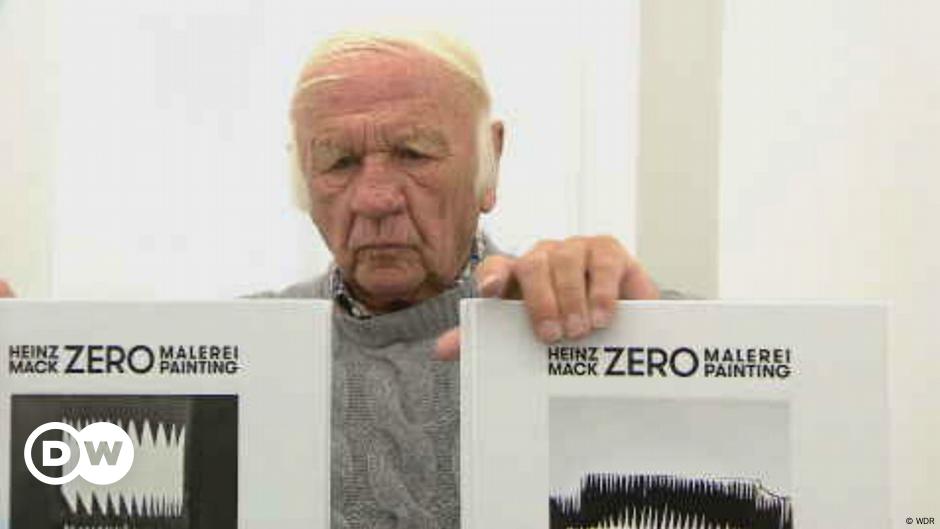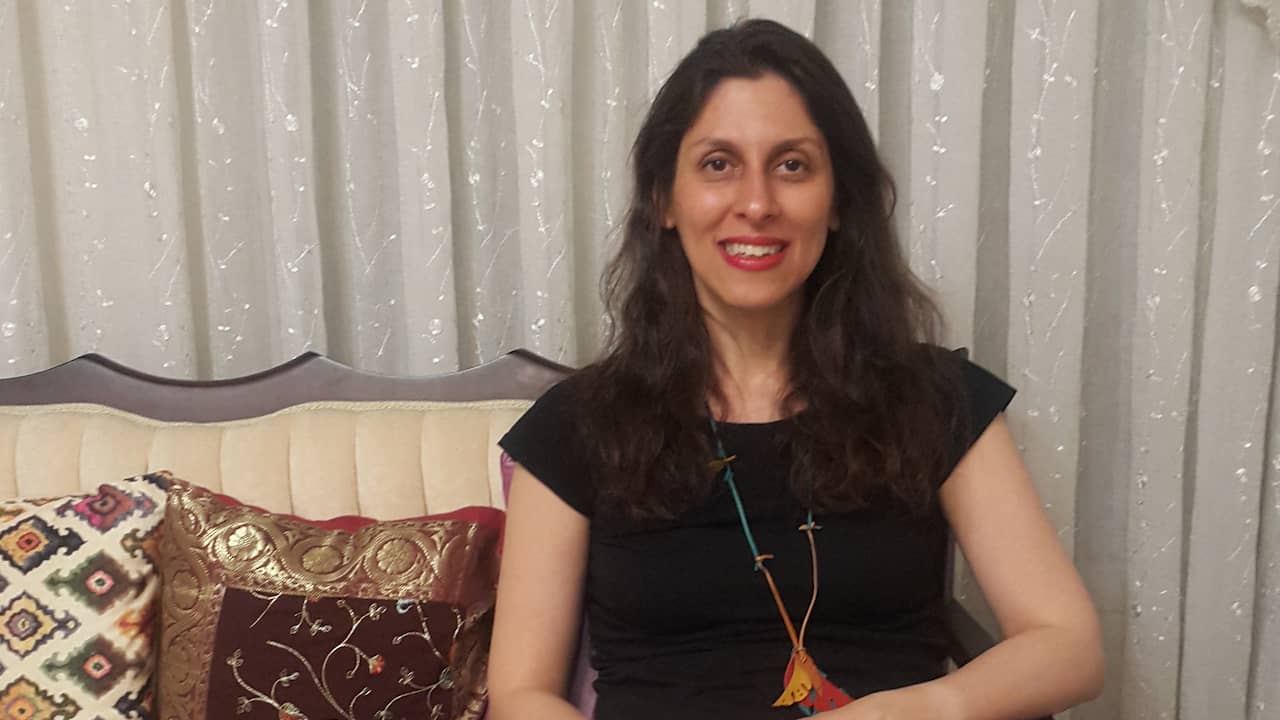Heinz Mack, sculptor, painter, co-founder of the ZERO group, had a decisive influence on Germany’s art history in the post-war period. When he moved to the Rhineland in the early 1950s from the small Hessian village of Lollar, where he was born on March 8, 1931, with a stopover in Krefeld, Düsseldorf was still heavily affected by the Second World War. Only gradually does the city rise from the ruins. Before graduating from high school, Heinz Mack submits his portfolio to the Düsseldorf Art Academy – and is accepted.
Heinz Mack experiments with silver foils and builds reflective sculptures
–
From 1950, the freshman student lived in a former horse stable at the Reuterkaserne right next to the academy. He has been fascinated by the effect of light since childhood, even though it is an ambivalent relationship, as he said in a DW interview on the occasion of his retrospective at the Bundeskunsthalle Bonn in 2011. “Light already played a major role at the end of the war, there was a five-watt incandescent lamp in the hallway. It was always dark.” In Krefeld he then experienced the first bomb attack – a spectacular sight. “When I was 14, I stood on the street and watched this spectacle; even if it was from the devil, it was fascinating, it was an important experience.”
Painting was no longer popular after the war
In his artistic work, Mack is increasingly detaching himself from the canvas as a background. When he happened to step on a metal plate lying on a carpet in 1953, he was fascinated by the structure of the print. So much so that he stopped painting. Instead, he experiments with metal, stone, water, and glass and builds technoid mirror images, rotating chrome fields and dynamic spatial constructions.
At Heinz Mack, you can’t ignore Düsseldorf and the ZERO group. The artist movement ZERO, i.e. zero, was founded in 1958 by Mack together with his artist colleagues Otto Piene and Günther Uecker at their common place of study in Düsseldorf. “ZERO was the end of an unhappy time that the Third Reich had set, and then the question arose of what happens in this vacuum,” Mack later recalled in a DW interview. “In this artistic and intellectual void, ZERO was a conclusion and the chance for a beginning from which everything should begin again.”
“Zero was the end of an unhappy time”
During the ZERO period, which lasted until 1966, joint works by Uecker, Piene and Mack were also created – such as the Zero room for documenta 1964: a gigantic light installation made of rotating elements. The group made contacts as far as Japan.
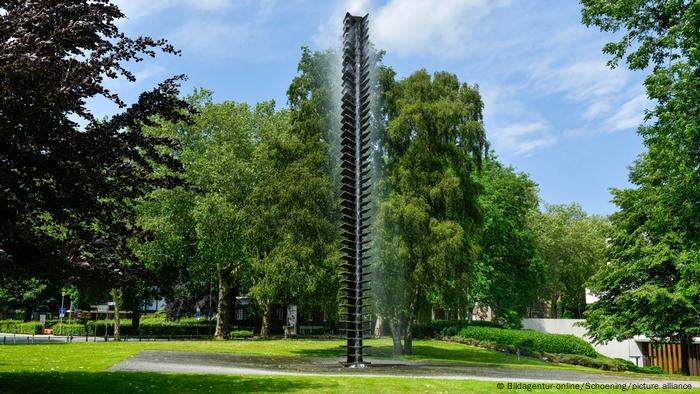
This water-plastic Macks is in the sculpture park in Münster
–
The ZERO artists want to be taken seriously and take their fate into their own hands. They organized their own exhibitions. The legendary Düsseldorf gallery owner Alfred Schmela also invited Mack and his Zero friends to his ten square meter gallery space, which was still tiny at the time. It is thanks to him that Zero has become so successful, says Mack.
Numerous sculptures by Mack are in the urban space
Many Mack sculptures can still be seen in German cities today: ceiling mosaics in a shopping arcade on Königsallee in Düsseldorf, water terraces at the North Rhine-Westphalian state parliament or a stele in the sculpture park in Münster. Mack and his ZERO colleague Piene were also hired by the Düsseldorf Opera, for which they created accessible rooms. In 1967 the Zero members split up. Heinz Mack continues to work alone. He makes light the most important design element in his works of art. Light refracts itself in shimmering silver relief images made of aluminum or glass.
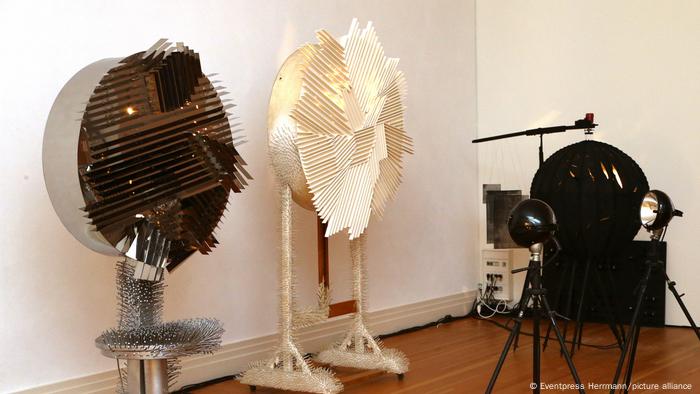
Art à la Mack: Light should be set in motion
–
Some of them are driven by motors and transform the world into glistening, agile units. He builds “black suns”, “light guides” or a “light carousel” that makes the spectral colors in the room dance. Mack’s art is radical and life-affirming at the same time. His steles made of glass, steel or brass, which he grouped into a forest of steles in Bonn, also set the light in motion. Mack took his experiments to extremes in the late 1960s – in his “Sahara Project”.
Mack turns the desert into an exhibition space
For the artist, the desert is a “space without end, where any attempt to find a location is excluded,” says Mack, who is impressed by the boundless expanse of the Sahara. “To set up a sculpture in this infinitely large light space was very exciting, and when you walked 500 meters away from it, there was only a light phenomenon.”
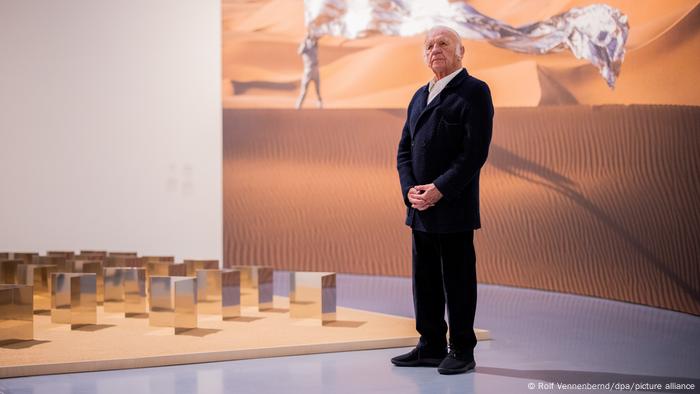
Heinz Mack and his works “Sahara-Relief” (2011) and “Silver flags in the Grand Erg Oriental” (1976).
–
From 1960/61, Mack turned the Sahara into a sculpture park. For his “Jardin Artificiel” (artificial garden) he forms gigantic sand reliefs. He builds sculptures out of fire to intensify the effect of the starry sky and uses cubes, mirrors, wing reliefs, sails, flags and monumental light steles. In the 1969 film “Telemack” you can see him walking through the desert wrapped in silver foil.
In December 2008 the ZERO Foundation was founded in Düsseldorf with the aim of maintaining, researching and promoting the central topics and aspects of ZERO – which would not have been possible without Heinz Mack.
For more than sixty years he has pursued his artistic research into light and material with astonishing vigor. Mack still works very independently and independently of market fashions – in his studio on a converted farm in Mönchengladbach.
– .
